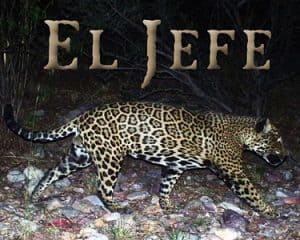This gets us up-to-date with the weeklies I’ve received. Sit back, have a cup of coffee ….
- Cent Or Landwatch v Connaughton – The Deschutes decision to authorize a water supply intake was consistent with the forest plan riparian management objectives (RMOs) and complied with NEPA. (9th Circuit)
- Beaver Creek NOI – Alleged violations of ESA on the Flathead for failing to consult on the forest plan for grizzly bears in newly acquired lands, and for proceeding with a project in lynx critical habitat prior to completion of forest plan consultation.
- Boise NOI, Payette NOI, BridgerTeton NOI – Alleged violations of ESA consultation/conference requirements for publication of over snow vehicle use maps.
- Friends Wild Swan v. Kehr – (New case.) The Beaver Creek Project on the Flathead is being challenged for failure to consider the cumulative effects of another project on the same ranger district, and for being inconsistent with forest plan road density standards for grizzly bears and elk. (See also Beaver Creek NOI above.) (D. Montana)
- Oregon Hunters Association v USFS – (New case.) Plaintiffs argue that the Ochoco Summit Trail System Project on the Ochoco failed to consider effects on elk and violates the forest plan direction for elk. (D. Oregon)
- CCRMC_v_USFS – Collection of data related to possible construction of a mine tailings pond on the Tonto had nominal effects on the environment, and approval did not require consideration of the impacts of the proposed copper mine it would service. (D. Arizona)
- WinterWildlandsAlliance_v_USFS – (New case.) This case involves over snow vehicle use maps on the Boise, Payette and Bridger-Teton prepared in 1988 and 1990. They are alleged to based on out of date information, violate forest plan requirements for at-risk species, and were not eligible to be “grandfathered in” under the Travel Management Rule. There is also a claim under the Wyoming Wilderness Act. (See also ESA NOIs above.) (D. Idaho)
- WesternWatersheds_v_Michael – A Wyoming state statute that criminalized collecting data on public lands after trespassing on private lands infringed on the First Amendment’s right of free speech. (10th Circuit)
- Rocky Mtn Wild v Dallas – In a case that voided the Rio Grande’s approval of land exchange related to the Wolf Creek Ski Area, the court denied a motion by the proponent to reconsider its decision. (D. Colorado) Discussed in more detail here.
- Sequoia Forestkeeper v Price – The Frog Timber Sale Project on the Sequoia complied with NEPA and forest plan requirements with regard to fisher. (E. D. California)
- FSEEE v USFS – (New case.) The complaint alleges that the decision to grant a special use permit to the Navy to conduct electronic warfare training did not to comply with the Olympic forest plan. W.D. Washington)
- CBD v BLM – (New case.) The Battle Mountain District of the BLM (Nevada) leased 195,732 acres for oil and gas development using an EA, and was challenged regarding its NEPA compliance. (D. Nevada)
- DOW v Duke – (New case.) This case involves the decision by the Department of Homeland Security to waive federal laws under the Illegal Immigration Reform and Immigrant Responsibility Act to construct a prototype Mexican border wall, due to its environmental impacts. (S.D. California)
- WildEarth Guard v BLM – The BLM failed to adequately consider the greenhouse gas emissions of four coal leases in Wyoming because its assumption that coal would be produced elsewhere if the no-action alternative were selected was not supported by the record (though mining was allowed to continue on remand). (10th Circuit)
- WildEarthGuardians v. Provencio – The Kaibab’s use of the motorized big game retrieval exception under the Travel Management Rule complied with the Rule and the National Historic Preservation Act, and the EA complied with NEPA. (D. Arizona)
- USA v. Carpenter – Elko County did not prove ownership of a road on the Humboldt-Toiyabe, and the Forest could not convey rights to the road in a settlement agreement. (D. Nevada)
- Alaska v. USDA The 2001 Roadless Area Conservation Rule was again upheld, including consideration of its application to the Tongass. (D. D.C., scanned file size exceeds site capacity)
- CBD v. FWS – (New case.) Plaintiffs challenge the biological opinion by the Fish and Wildlife Service, and reliance on it by the Coronado when it approved the operating plan for the Rosemont Copper Mine. (D. Arizona) Discussed further here.
- Wyoming v. Zinke – The BLM has proposed to rescind its 2015 Fracking Regulation, and therefore a case involving its validity was not ripe for judicial review. (10th Circuit)


